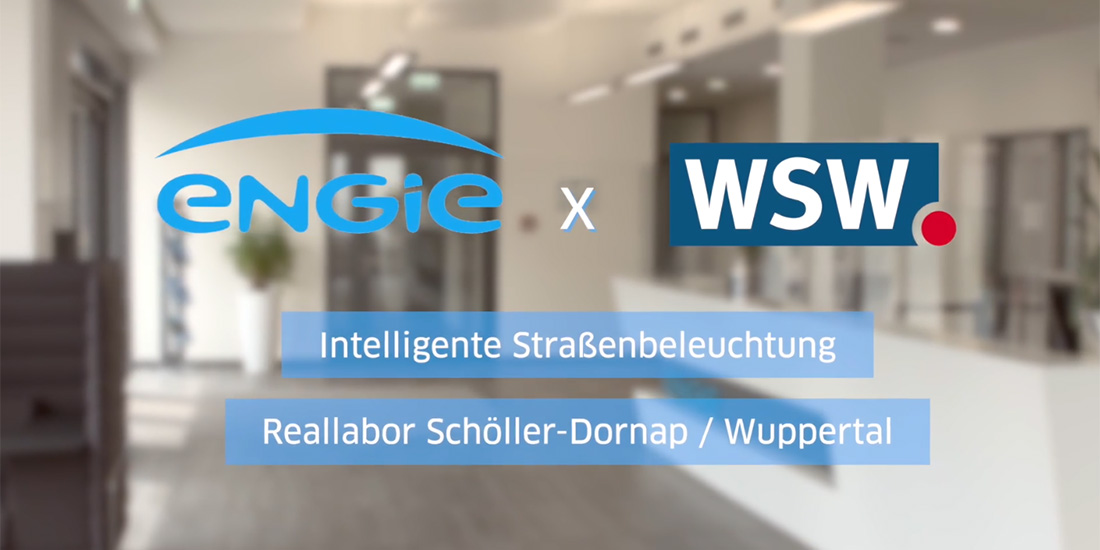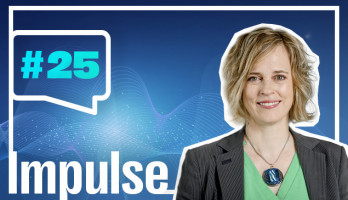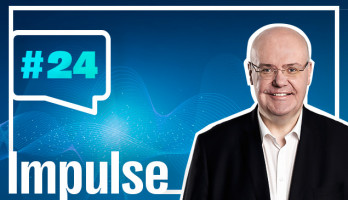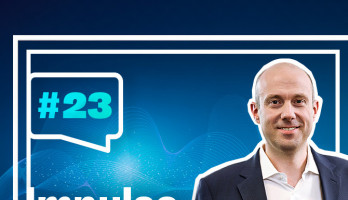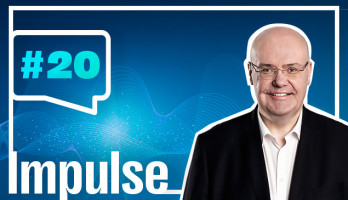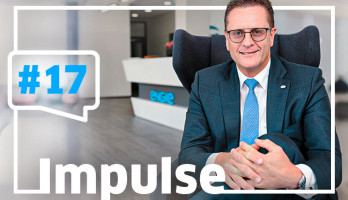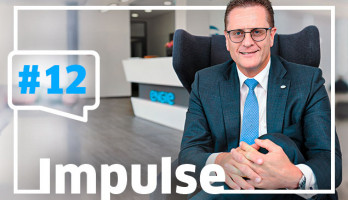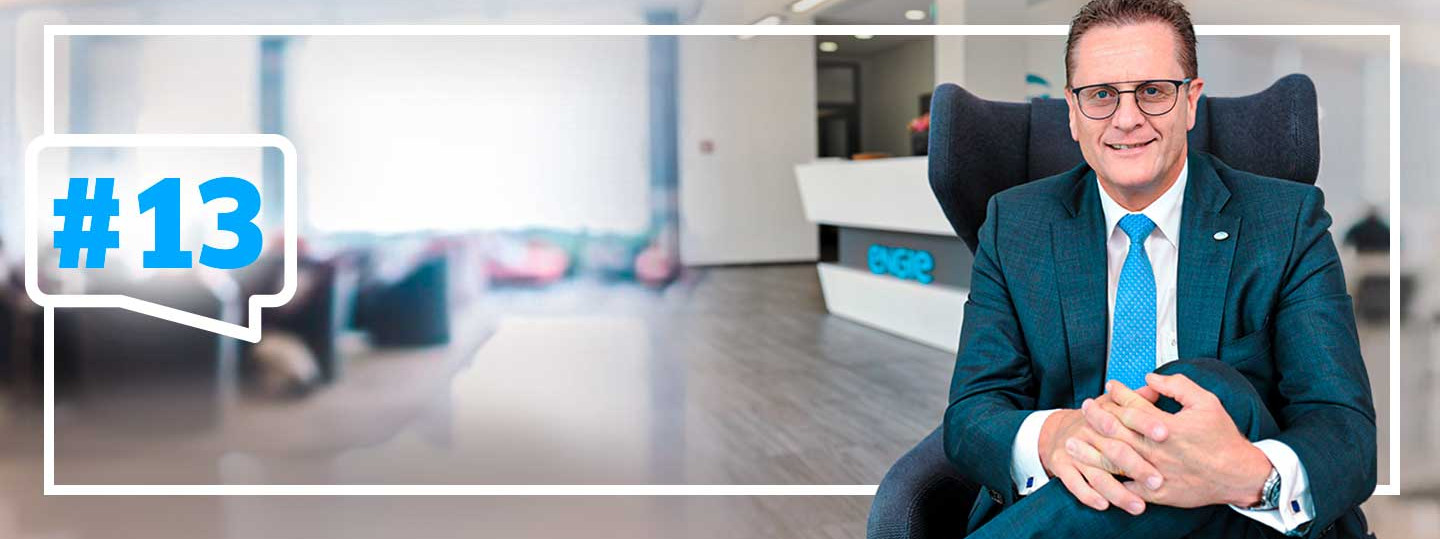
Impulse #13: The City of the Future: How Urban Climate Protection Succeeds
How will we live and work tomorrow? The district model "Das Neue Gartenfeld" in Berlin-Spandau is setting new impulses across the industry. Manfred Schmitz presents the lighthouse project for intelligent and climate-friendly neighborhood development that ENGIE Deutschland and its partner GASAG will implement on behalf of the planning consortium Das Neue Gartenfeld GmbH & Co.KG.
"The city of the future is smart, connected and sustainable. We need to set the right course for this today. Our 'Das Neue Gartenfeld' neighborhood project in Berlin-Spandau is playing a pioneering role in this - far beyond Germany's borders."
More and more people are living in cities. In Germany, this figure is currently around 77.6 percent of the total population (source: IBISWorld, 2022), and the level of urbanization worldwide is also expected to approach 75 percent in the future. This presents opportunities, but also enormous challenges. First and foremost, cities today account for more than two-thirds of global CO2 emissions. What does that mean for climate protection? Well, the only conclusion that can be drawn from this is that the climate targets cannot be achieved without the commitment of cities. I would even go so far as to say: climate protection will be decided in the cities.
Urban resilience: for a livable city of the future
At the same time, we know that German cities and the German building sector in general are still hesitant in this regard and, as a result, will in all likelihood not achieve the climate targets by 2035 - I highlighted this in my last Impulse editorial in the context of the coalition agreement of the current German government. Now I personally always follow the premise: The higher the pressure, the more innovative the solutions. And in view of climate change, we certainly have plenty of pressure. That's why we need much more innovation. We need more courage, we need new approaches to urban climate protection. Another crucial question is: How do we want to live and work tomorrow? This is about people. For them, for all of us, it is important to make our cities livable. And livable in the future means intelligent, climate-smart and sustainable
The ENGIE concept: creating value, shaping the future
My team at ENGIE Deutschland has been working for years on appropriate concepts for real estate and neighborhoods nationwide. We view quarters independently as small cities and thus as a "laboratory" for the city of the future. In doing so, we have a mission: Our tomorrow is green! To this end, we support operators in making existing office and commercial space in neighborhoods more energy-efficient and thus more sustainable, thereby securing the long-term value of their real estate. We have developed our Real Zero Master Plan specifically for this purpose, on the basis of which we coordinate and strategically align our customers' facilities, buildings and infrastructure in a climate-neutral manner. And secondly, we support project developers and builders in meeting the growing demand for living space and designing new neighborhoods. There's no question about it: by its very nature, a new concept seems "easier" in many respects than refurbishing existing buildings, because it offers a wider range of possible options. All the more reason, then, to recognize and assume the corresponding responsibility - and to actively fill these potentials with innovation and courage. By this, I mean above all: New neighborhoods must be designed with low CO2 emissions right from the start. This can only be achieved by adopting a holistic approach that takes into account the entire life cycle and combines the highest standards of economic efficiency, technology and climate protection. We support our customers in this complex task with special district consulting, whereby we basically proceed in four phases that build on each other - commitment, rough analysis, detailed analysis and implementation. We have compiled all the information on neighborhood consulting for you on our website. If you have any questions or would like to discuss a specific project, our experts look forward to hearing from you!
The New Garden Field: This is how the future works!
How such a project succeeds is impressively demonstrated by "Das Neue Gartenfeld" in Berlin-Spandau. While the 31-hectare island was once home to a Siemens cable plant, more than 3,700 apartments, 600 commercial units and extensive communal areas and facilities are now being built on some 40 construction sites. For this, the planning consortium for "Das Neue Gartenfeld" - consisting of the developers UTB Projektmanagement GmbH, BUWOG, Baugenossenschaft BeGeno16 eG, Wohnungsbaugenossenschaft Am Ostseeplatz eG, and Jula GmbH - is relying on the expertise of a joint venture between ENGIE Deutschland and the Berlin energy supplier GASAG, a minority shareholding of ours for many years. I am particularly pleased about this partnership, as ENGIE as an innovator and GASAG as a local hero form the perfect symbiosis for me. And I can reveal to you that we have big plans: "Das Neue Gartenfeld" will act as a model neighborhood for the city of diversity in the 21st century. To this end, the Quarter is being planned holistically in all construction areas from the outset - an approach that is unique to date. Our common goal is to develop future-oriented solutions for energy, mobility and digitization. What's new is that in the joint venture, as an independent "Quartierswerk Gartenfeld" - and thus as one of Germany's first "municipal utilities for a neighborhood" - we will not only plan, build and operate the efficient energy supply; for example, via an innovative cogeneration system in combination with heat pumps and a power-to-heat plant for a decentralized and climate-friendly heat supply. But that we will also provide comprehensive utility services for modern, urban living in a smart city. These include e-charging solutions and parking space management as well as various sharing offers; the community idea is also reflected in a local tenant power concept. Another special feature: The neighborhood will be smart and networked. The information will be made available to the more than 10,000 users via a dedicated neighborhood app, which will be interactive and particularly user-friendly. Users will be able to view their energy contracts, share cargo bikes and e-scooters, chat with their neighbors, and much more - an all-round carefree package for a high quality of life that remains versatile, sustainable and affordable for everyone.
Ready for tomorrow: learning from lighthouse projects
You have probably already recognized it: "Das Neue Gartenfeld" inspires me. Not least because this unique infrastructure project is already ten years ahead of the climate targets set by the German government for 2040 thanks to its synergetic approach, climate-friendly energy supply and thoughtful digitization. This shows: It is possible! Urban climate protection is possible, and it's possible today! The appropriate technologies are ready and waiting. What is lacking in cities and neighborhoods is innovation, courage and the power to implement. My experience shows that many continue to plan in classic categories - for example, "mobility," "lighting," and so on. However, that is not a concept for the future. We have to learn to think in a more networked way. I'd be happy to give you an example of how this can be done: In the Schöller/Dornap neighborhood of Wuppertal, ENGIE Deutschland and its partner Wuppertaler Stadtwerke have set out to do no less than redefine streetlight. In this pilot project, streetlights act as digital infrastructure carriers. Thanks to intelligent sensors and control systems, they help save energy, protect the climate and increase safety for citizens - in short, improve the quality of life in Wuppertal. Who would have guessed a few years ago that lanterns could do so much more than just light up? Cities all over the world, from Copenhagen to Vienna to San Diego, are showing themselves to be progressive and are coming up with great infrastructure projects that do justice to the city in (climate) change and show how the future works. But these are still only to be found in isolated cases. In my opinion, however, this is no longer enough in view of the current climate situation: The holistic way of thinking and approaching projects, as is done in Das Neue Gartenfeld, must become the standard. The infrastructural, ecological and economic development of the city of the future is a task that we must dedicate ourselves to today in order to confront climate change with united forces - and to make our own future green and worth living.
The City of the Future: Neighborhood Development with Innovation and Courage
Dear reader:inside, I am curious: What do you wish for, what do you specifically demand from the city of the future? And how can our team support you in your urban and neighborhood development projects? We would like to discuss this with you. And I would like to cordially invite you to the Berlin Energy Days from May 2 to 6, 2022, where we will be offering an expert panel on the topic of neighborhood development; you will find more information and the opportunity to register on the event website shortly.
My colleagues and I are looking forward to the dialogue with you - as always, also very welcome by email to manfred.schmitz@engie.com. Let's shape the city of the future together!
Your Manfred Schmitz
CEO ENGIE Deutschland
Our Expert

